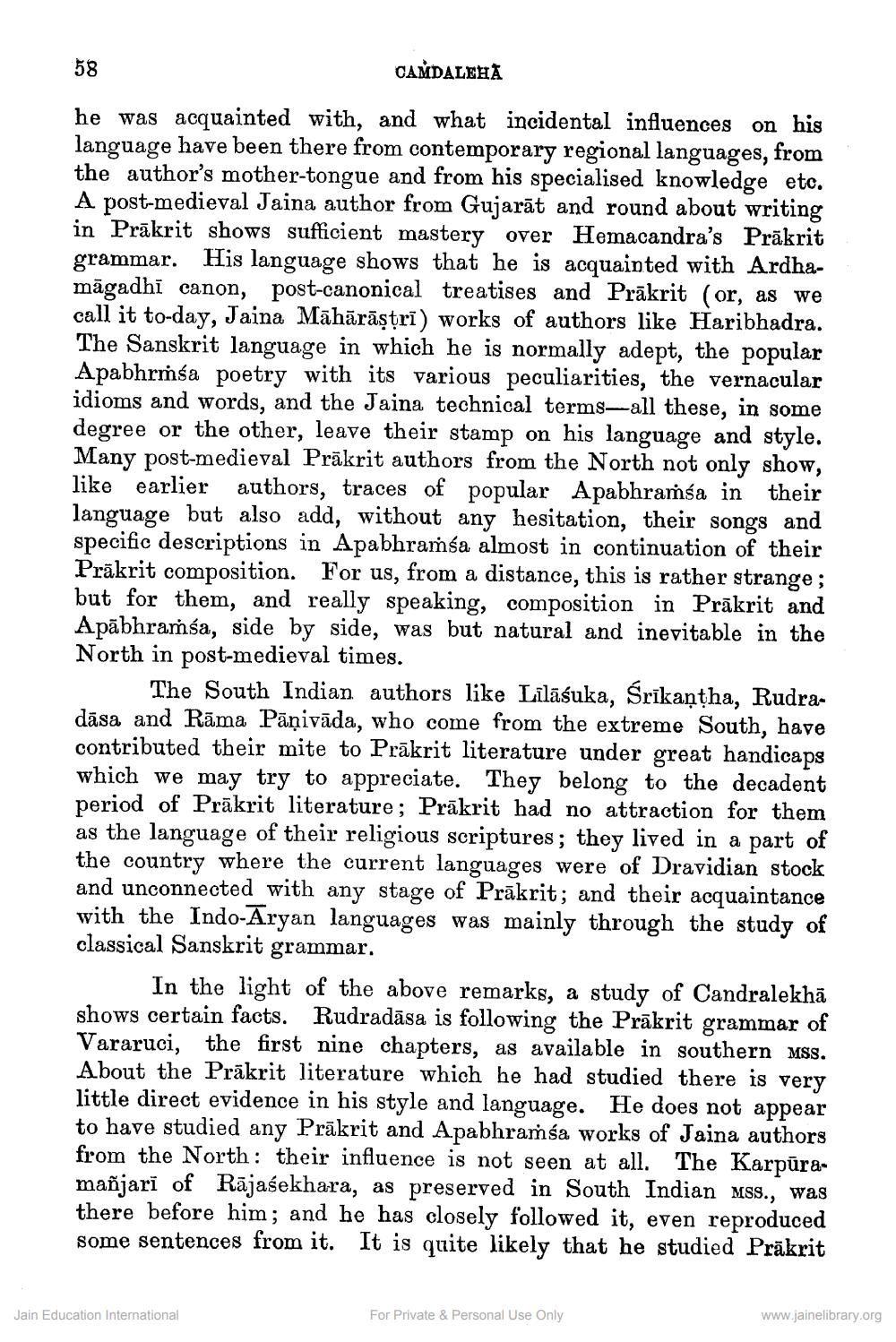________________
58
CANDALEHA
he was acquainted with, and what incidental influences on his language have been there from contemporary regional languages, from the author's mother-tongue and from his specialised knowledge etc. A post-medieval Jaina author from Gujarāt and round about writing in Prākrit shows sufficient mastery over Hemacandra's Prākrit grammar. His language shows that he is acquainted with Ardhamāgadhi canon, post-canonical treatises and Prākrit (or, as we call it to-day, Jaina Māhārāștrī) works of authors like Haribhadra. The Sanskrit language in which he is normally adept, the popular Apabhrmśa poetry with its various peculiarities, the vernacular idioms and words, and the Jaina technical terms-all these, in some degree or the other, leave their stamp on his language and style. Many post-medieval Prākrit authors from the North not only show, like earlier authors, traces of popular Apabhraṁsa in their language but also add, without any hesitation, their songs and specific descriptions in Apabhraíśa almost in continuation of their Prākrit composition. For us, from a distance, this is rather strange; but for them, and really speaking, composition in Prākrit and Apābhraíía, side by side, was but natural and inevitable in the North in post-medieval times.
The South Indian authors like Līlāśuka, Śrīkaņtha, Rudradāsa and Rāma Pāṇivāda, who come from the extreme South, have contributed their mite to Prākrit literature under great handicaps which we may try to appreciate. They belong to the decadent period of Prākrit literature; Prākrit had no attraction for them as the language of their religious scriptures; they lived in a part of the country where the current languages were of Dravidian stock and unconnected with any stage of Prākrit; and their acquaintance with the Indo-Aryan languages was mainly through the study of classical Sanskrit grammar.
In the light of the above remarks, a study of Candralekhā shows certain facts. Rudradāsa is following the Prākrit grammar of Vararuci, the first nine chapters, as available in southern Mss. About the Prākrit literature which he had studied there is very little direct evidence in his style and language. He does not appear to have studied any Prākrit and Apabhramsa works of Jaina authors from the North : their influence is not seen at all. The Karpūramañjari of Rājasekhara, as preserved in South Indian mss., was there before him; and he has closely followed it, even reproduced some sentences from it. It is quite likely that he studied Prākrit
For Private & Personal Use Only
Jain Education International
www.jainelibrary.org




